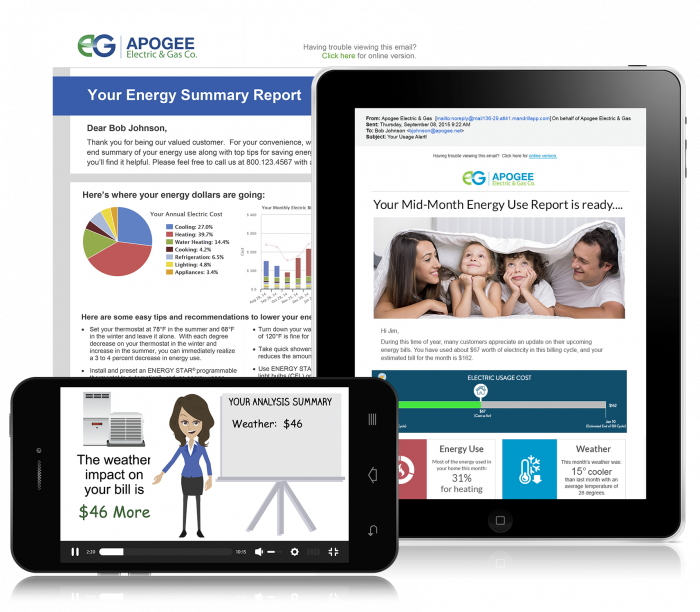February 16, 2018 | Blog
Apogee Institute recently hosted an event highlighting digital customer engagement where panelist from E Source, Jackson EMC, PPL, LCEC, and Duke Energy shared their story. Keenan Samuelson, Analyst & CCXP, of E Source laid the groundwork outlining his Utility Marketing Survey. Keenan named the top three strategies for collecting digital contact information as automated capture, such as registering for and online account, online service orders or online bill pay, marketing efforts, through direct contact from the call center, and a poll strategy, giving customers something of value in return for information such as bill explanations, payment reminders, outage updates and energy use alerts.
Shared challenges faced by utilities named during the presentations where:
 for email or mobile.
for email or mobile.How are utilities meeting these challenges?
Amy Bryan, Director of Residential Marketing, Jackson EMC, has ranked in the top 5 for customer satisfaction in her segment consistently since 2005 but, faced the challenge of conservative communications policies. To convince management, she launched a pilot that delivered value through personalized video bill explanation, triggered when the customer’s bill was higher than usual. Then energy summary reports were sent, each with a call to action. Surveys show the emails received a 90% satisfaction rating with less than 1% choosing not to receive the emails. Starting with only 50 thousand emails collected through paperless billing and call centers, in 2018 Bryan will launch advertising campaigns that drive members to a preference center allowing customers to opt-in, increasing their digital reach. Delivering value made the difference.
Susan Smith, Customer Experience Specialist, PPL, believes in the power of digital communications, her paperless billing campaign increased enrollment by 60%. Her biggest obstacle was collecting text consent. There was no way to know if the phone number on file was mobile. Her solution was to create a screen pop in the CIS portal that asks the CSR to explain the benefits of email and text messaging and gain the consent needed to send information. CSR’s efforts had an 86% success rate. She also developed a preference center, that proved 83% successful, and IVR prompts that delivered a 56% success rate. Getting the call center on board was key but Susan sees all customer contact points as opportunities.
Joe Padgett, Director of Customer Care, LCEC, discovered his customers wanted digital communications 24/7. In 2010 he had only 20% of his customer’s emails. He then began to put accountability in place through performance reviews that held CSRs responsible for collecting and updating information. Today he has 86% of his customer’s email information. He then delivered value through bill notifications and high bill alerts. Other tactics include a preference center, mail, and an email customer care box. He also uses a third-party vendor to keep his email database purged of bad emails.
Sandra Buzzard and Tamarah Delevan, Digital Engagement Team, Duke Energy have extended their digital reach by email from 26% in 2016 to 58% by the end of 2017. How did they do it? CSRs collect emails from inbound calls. Email addresses are used for user names such as start/stop services on the web, and online accounts. Duke Energy has a preference center on their website also accessible on Facebook. They have also purchased lists to match up email addresses with name, addresses, and phone numbers.
If your goal is to increase customer satisfaction through customer engagement it is vital to give personalized messaging that brings value. To do this effectively, the first step is gathering correct emails and mobile numbers. Forward-thinking utilities are paving the way to a better customer experience. If you would like to listen to the full presentation you can download the recording here.
Contact Karen Morris at 678-684-6801 or kmorris@apogee.net for more information.
APOGEE INTERACTIVE, INC. © 2023. ALL RIGHTS RESERVED